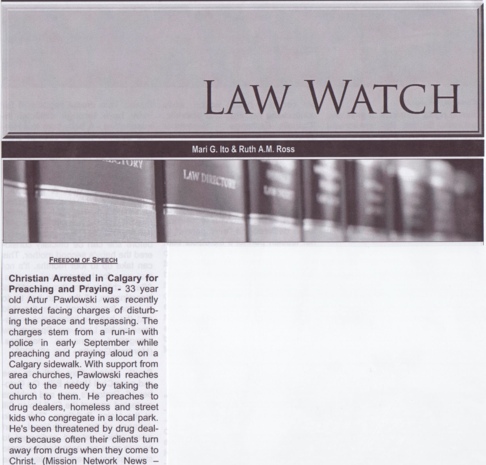‘High rate’ of attack on city’s homeless
‘High rate’ of attack on city’s homeless
A significant majority of the city’s chronic homeless population has faced a violent attack on the streets, according to an in-depth survey conducted by the Calgary Homeless Foundation that gathers information about the health of people living on the streets.
Sixty-eight per cent of the 137 people surveyed throughout the fall said they have been a victim of a violent attack since they’ve become homeless.
"Our homeless folks here in the city are victims of a violent attack at an extremely high rate," said Marina Giacomin, vice-president of re-housing with the homeless foundation. "So not only are they chronically homeless, addicted, mentally ill and already really sick, but they are also getting beat up.
"That is really concerning to us."
In fact, Calgary’s rate of violence against homeless people is higher than any American city that has done a similar survey.
"It’s significantly, significantly higher than any other city we’ve surveyed yet," said Becky Kanis, director of innovation with Common Ground, an agency in New York that has helped to reduce street homelessness in Times Square by 87 per cent in three years.
Kanis has travelled to eight cities across the U. S. and Canada — including Calgary — to help officials conduct the surveys.
"We’ve done 4,300 surveys in Los Angeles, New York, Portland, Nashville and Washington, D. C.," she said. "It’s darn near close to twice the rate found in other places."
The survey, called the vulnerability index, was conducted in Calgary for one day in October and three days in early December.
Teams of volunteers went throughout the downtown, along the north side of the Bow River and into Forest Lawn between 2 a. m. and 5 a. m. to interview those homeless people who sleep rough — or live on the streets, in alleyways and along the river.
They asked questions ranging from whether they’ve ever had a medical condition to whether they’ve ever experienced violence on the streets to whether they’ve ever been in foster care.
Based on the responses, 35 people were considered the most vulnerable –meaning they have a mental illness, an addiction and another health issue such as cancer or heart disease.
"They are most likely to die in a short period of time,"Giacomin said, noting those are the people the foundation is working to get housing on an urgent basis.
Another reason to get the most vulnerable housing is their cost to society, she said.
Estimates by the homeless foundation suggest the average chronic homeless person costs $134,000 annually in shelter, hospital and jail time–meaning the 35 most vulnerable homeless cost nearly $5 million a year.
"It lends so much weight and value to the argument that we need to be rehousing people," said Giacomin. "They are costing us a ton."
The 35 most vulnerable have also faced even more violence than the rest of the homeless population, with 91 per cent saying they have been a victim of an attack.
Homeless Calgarians at a downtown bottle depot said they notice the violence. Joe, who declined to give his real name, said he was chased recently because someone thought he stole their belongings.
"I’ve had people drive by and yell at me," he said. "It’s mostly young punks who do meth and victimize the homeless. "We are people, too."
Another man, who called himself Red, said he’s experienced violence among the homeless population.
"They’ll steal your bottles, they’ll steal your beer, they’ll steal your smokes," he said.
Louise Gallagher, manager of resource development and public relations for the Calgary Drop-In Centre, said the centre conducted a survey of its clients a year ago and found nearly 73 per cent of those surveyed had been assaulted or had been a victim of crime.
"On the street, you are always a victim," she said.
However, most homeless people won’t report the crimes to police, because they often feel victimized by the officers.
District 1 Sgt. Frank Cattoni, whose areas include East Village, Ramsay and Inglewood, said the police are working with the shelters to build trust with the homeless.
"We know anecdotally and we have known anecdotally when we talk to the homeless that they are preyed upon by a demographic that has infiltrated itself into the homeless population," he said. "They target them because they are vulnerable."
Cattoni said the victimization goes further than assaults and robberies.
"It’s those drug dealers who prey on their vulnerability to addictions,"he said, noting police continue to work with the agencies to find a solution.
In addition, Cattoni said the police service has requested provincial funding for a police and crisis team, which would pair an officer with a mental health worker so they can get the chronic homeless off the streets and into housing.

